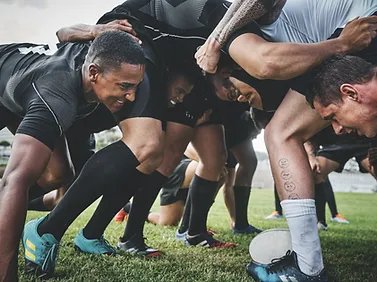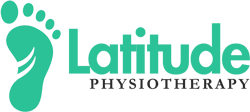Cervicogenic (Tension) Headaches
Injury Guide

Cervicogenic headaches are a type of headache that originates from the neck or cervical spine. Athletes, who often engage in rigorous physical activities, can be prone to developing these headaches due to repetitive strain or trauma to the neck region. Recognizing the symptoms and understanding the causes of cervicogenic headaches is essential for athletes seeking effective rehabilitation strategies.
Symptoms:
Symptoms of cervicogenic headaches typically include pain that originates in the neck and radiates to the back of the head, temples, or behind the eyes. The pain is typically described as a dull, aching sensation and may be accompanied by neck stiffness or limited range of motion. Athletes may also experience referred pain into the shoulder, arm, or upper back. These headaches can significantly impact an athlete’s performance and overall well-being, making proper diagnosis and treatment crucial.
Anatomy:
The cervical spine, consisting of seven vertebrae, plays a central role in the onset of these headaches.
The neck is composed of intricate structures, including muscles, ligaments, joints, and nerves, that work in harmony to support and stabilize the head. The cervical vertebrae are connected by intervertebral discs, which provide cushioning and allow for flexibility. Muscles, such as the suboccipital muscles at the base of the skull, trapezius, and sternocleidomastoid, surround the cervical spine and are responsible for movement and stabilization.
When these structures are compromised, it can lead to cervicogenic headaches. Poor posture, such as slouched or forward head posture, places excessive stress on the cervical spine and its supporting structures. This prolonged stress can result in muscular imbalances, causing tightness and trigger points in the surrounding muscles.
The cervical joints, including the facet joints, can also contribute to cervicogenic headaches. Repetitive movements, such as constant neck rotation or extension, can strain these joints and cause irritation or inflammation. Additionally, previous neck injuries or trauma, such as whiplash from sports-related accidents, can disrupt the normal biomechanics of the cervical spine and lead to cervicogenic headaches.
The nerves in the neck can play a significant role in cervicogenic headaches as well. The upper cervical nerves, specifically the occipital nerves, have sensory branches that innervate the back of the head, temples, and forehead. When these nerves are irritated or compressed due to muscular tension or joint dysfunction, they can transmit pain signals to these areas, resulting in cervicogenic headaches.
Understanding the anatomy of cervicogenic headaches helps guide the rehabilitation process for athletes. Physical therapy interventions focus on addressing the underlying structural and functional issues. By restoring normal alignment, improving muscular imbalances, and reducing joint dysfunction, athletes can find relief from cervicogenic headaches and regain optimal performance.
Causes:
Various factors can contribute to the development of cervicogenic headaches in athletes. Poor posture, such as forward head posture, places excessive stress on the cervical spine, leading to muscular imbalances and tension in the neck. Repetitive movements or activities that require constant neck rotation or extension can strain the cervical joints, muscles, and nerves, triggering headaches. Additionally, previous neck injuries or trauma, such as whiplash, can increase the likelihood of developing cervicogenic headaches.
Rehab Strategies:
Rehabilitation strategies focused on managing cervicogenic headaches in athletes involve a multidimensional approach. Physical therapy plays a crucial role in addressing the underlying causes and providing targeted interventions. The initial phase of rehabilitation often focuses on pain relief and reducing inflammation through modalities like heat therapy, ultrasound, or electrical stimulation. Manual therapy techniques, such as joint mobilization, soft tissue mobilization, dry needling, and myofascial release, can help restore normal range of motion and alleviate muscle tension in the neck.
Posture correction and ergonomic education are essential components of rehabilitation for cervicogenic headaches. Athletes need to be educated about maintaining proper alignment during training and competition, as well as in their everyday activities. Strengthening exercises for the neck, upper back, and core muscles can help improve postural stability and reduce strain on the cervical spine. Additionally, flexibility exercises targeting the neck and shoulder girdle can enhance range of motion and alleviate tension.
Athletes can benefit from specific exercises that promote neck stability and control. These exercises may involve resistance training using resistance bands or light weights to strengthen the deep neck flexors and extensors. Proprioceptive exercises, such as balancing on unstable surfaces, can enhance neuromuscular control and coordination of the neck muscles. Athletes may also be advised to modify their training routines to avoid activities that exacerbate their symptoms until they have sufficiently recovered.
Cervicogenic headaches can significantly impact athletes, but with proper rehabilitation strategies, they can find relief and regain optimal performance. By addressing the underlying causes of these headaches, including poor posture, muscular imbalances, and previous neck injuries, physical therapy can play a vital role in alleviating pain, restoring function, and preventing future occurrences. If you’re an athlete experiencing cervicogenic headaches, Latitude Physiotherapy offers tailored rehabilitation programs designed to help you get back in the game pain-free. Contact us today to schedule an appointment and take the first step towards recovery.
Let’s
Work
Together
Ready to get started? Click here. General questions? Read our FAQ page. Have a specific question? Leave us a message!
